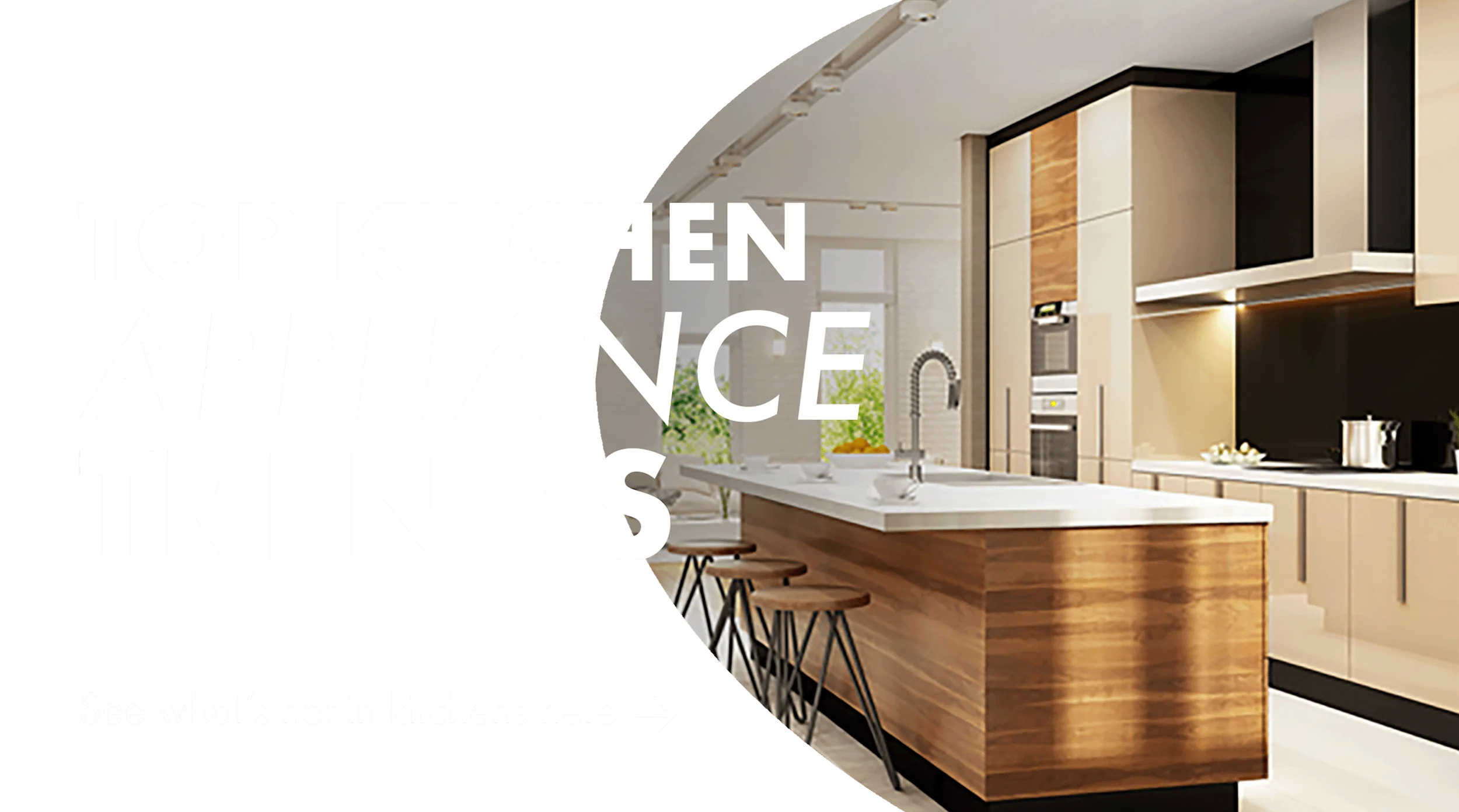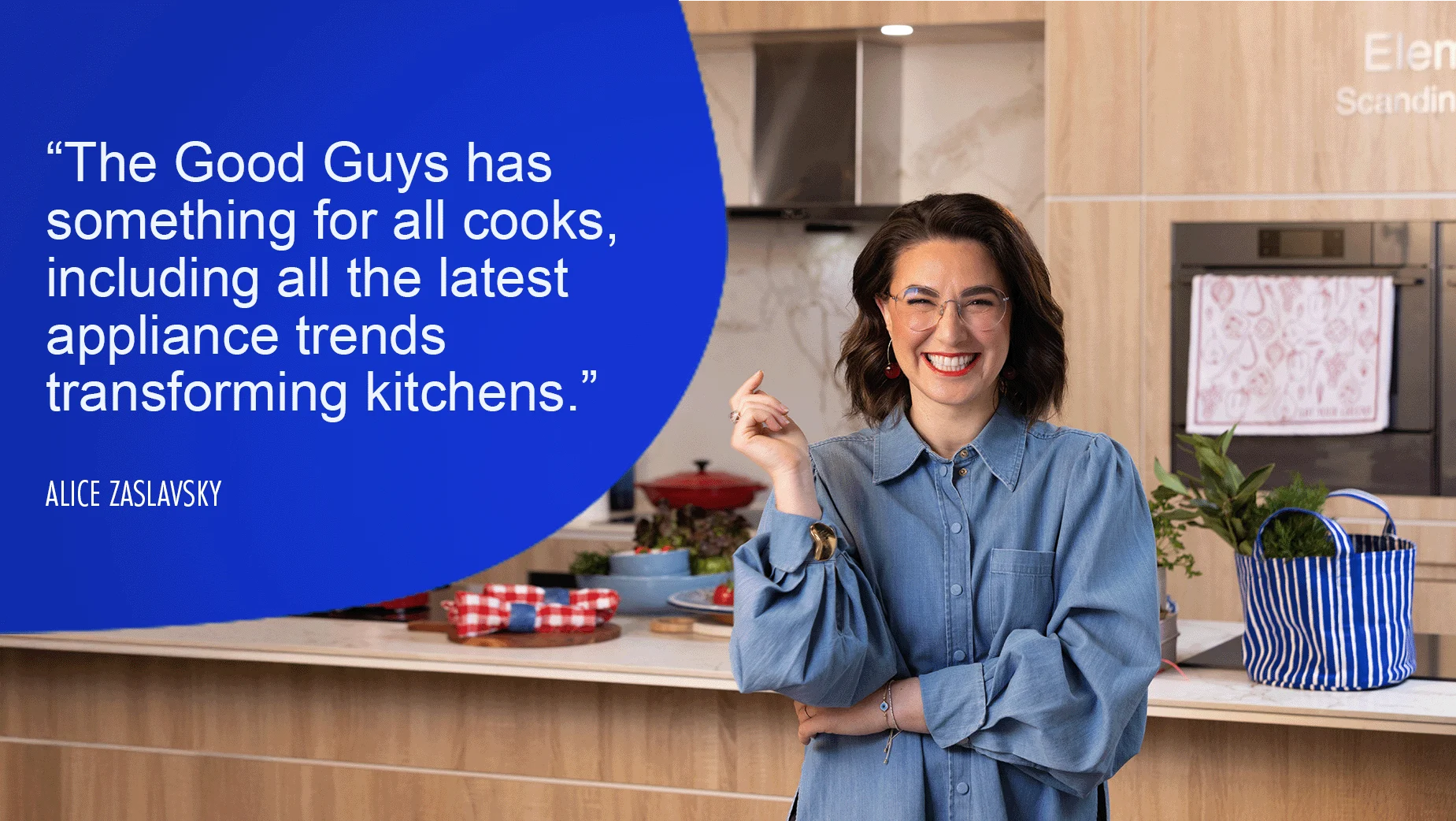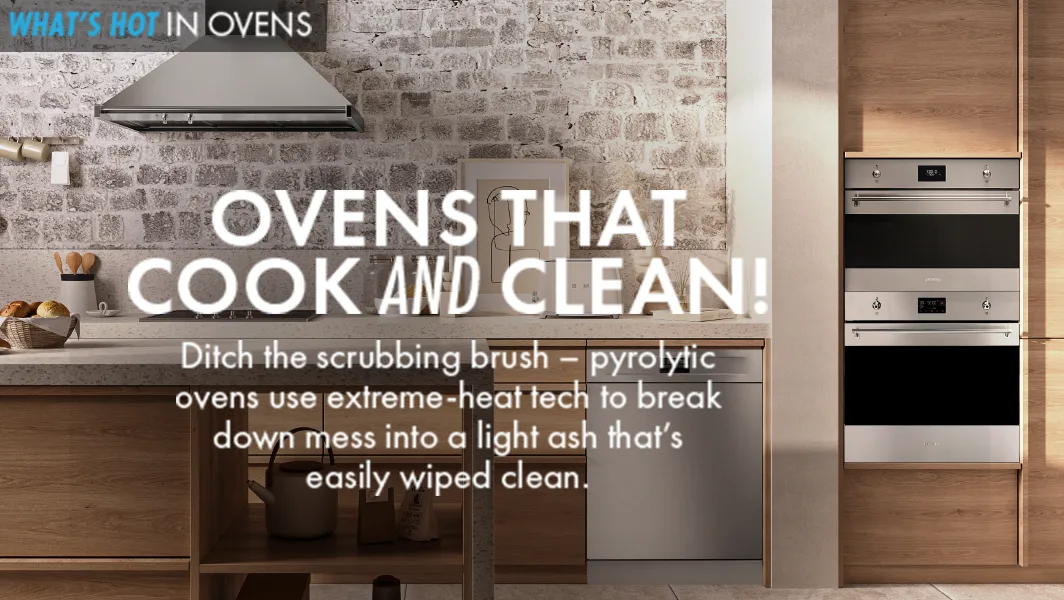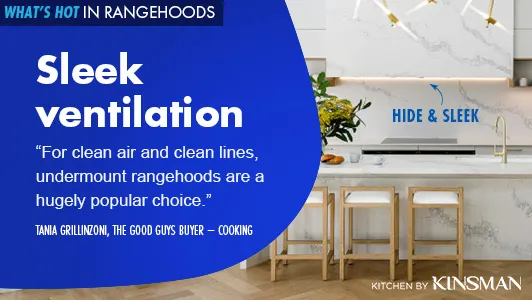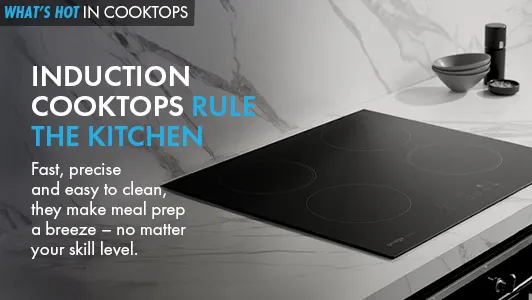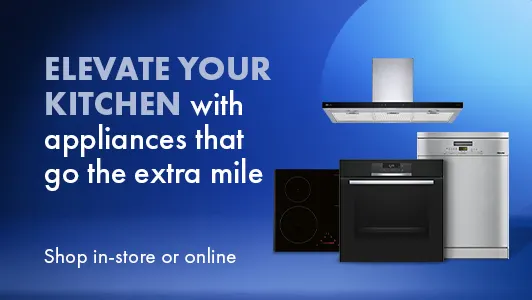Different Types of Cooking Appliances
Kitchen cooking appliances encompass multiple categories designed for various preparation methods and installation configurations.
Ovens come in electric and gas varieties with built-in or freestanding installation options. Electric Ovens provide consistent temperature control, whilst gas models offer visible flame control and typically faster preheating.
Pyrolytic Ovens feature self-cleaning functions reaching temperatures up to 500°C, burning grease and grime into ash for simple cloth wiping. The door locks during cleaning cycles for safety. Catalytic liner alternatives absorb fat spatters, requiring periodic high-temperature burning followed by damp cloth cleaning.
Cooktops divide into three main technologies: gas, electric ceramic, and induction.
Gas Cooktops provide instant heat control with visible flame size indicating temperature levels. These require mains gas connections or LP Gas models, often including conversion kits.
Ceramic Cooktops feature flat surfaces enabling easy cleaning. These maintain steady low heat better than gas but offer less precise temperature adjustment. Electric Cooktops with solid hotplates provide alternative heating zone configurations.
Induction Cooktops use magnetic fields heating cookware directly without surface heating. These represent the safest and most energy-efficient option with highest purchase costs but lowest running expenses.
Rangehoods extract grease, heat, smoke, and steam through either recirculating filtration or ducted external venting. Ducted models deliver superior performance but require more complex installation involving roof ducting. All rangehood installations necessitate licensed electricians. Rangehood installation services provide professional setup including cleanup and waste removal.
Dishwashers consume less water than handwashing equivalent loads. Built-In Dishwashers install within cabinetry below benchtops without side or top panels, requiring anchoring for stability.
Integrated Dishwashers offer semi or fully integrated options with front panels matching kitchen cabinetry through cabinetmaker customisation.
Microwaves provide quick heating and defrosting, whilst sinks and taps complete kitchen functionality. Kitchenware accessories support cooking preparation and food storage.
Leading brands include Miele, Bosch, Fisher & Paykel, Westinghouse, and Electrolux.
Kitchen Ovens & Cooktops
Oven and cooktop combinations provide complete cooking solutions for kitchen installations.
Oven types:
Built-in wall ovens install at eye level for ergonomic access
Under-bench ovens position below cooktops in traditional configurations
Double ovens enable simultaneous cooking at different temperatures
Steam ovens provide moisture-enhanced cooking for healthier preparation
Combination microwave-ovens offer multiple cooking methods in single units
Cooktop configurations:
4-burner models suit compact kitchens and small households
5-burner options include central wok burner or varied heat zones
6-burner configurations accommodate large-scale cooking requirements
Domino modules enable custom cooktop combinations with specialty zones
Measure installation cutouts precisely before purchasing to ensure proper fitting. Verify clearance requirements for ventilation and heat dissipation specified in manufacturer guidelines.
Energy Efficiency in Cooking Appliances
Energy star ratings indicate annual electricity consumption, with higher ratings representing lower running costs and reduced environmental impact.
Efficiency considerations:
Induction cooktops deliver the highest efficiency by heating cookware directly without thermal energy loss to surrounding surfaces. Gas cooktops lose heat to the environment but provide instant control reducing energy waste from extended preheating.
Electric ovens with fan-forced convection distribute heat more efficiently than conventional ovens, reducing cooking times and temperatures by approximately 20°C. Pyrolytic self-cleaning consumes significant energy during cleaning cycles but eliminates chemical cleaner production and disposal.
Compare energy ratings within similar capacity ranges—larger ovens naturally consume more energy than compact models regardless of efficiency ratings. Timer functions and programmable settings prevent energy waste from forgotten appliances left running.
Latest Innovations in Cooking Appliance Technology
Smart Connectivity
Wi-Fi-enabled appliances connect to smartphone applications for remote monitoring, temperature adjustment, and cooking completion alerts. Recipe integration sends optimal temperature and time settings directly to ovens, whilst cameras enable viewing cooking progress remotely.
Precision Temperature Control
Probe thermometers monitor internal food temperatures, automatically adjusting oven settings or alerting when target temperatures are reached. Multi-zone cooktops maintain precise temperatures across different cooking areas simultaneously.
Steam and Combination Cooking
Steam ovens inject moisture during cooking, retaining nutrients and preventing food drying. Combination steam-convection modes deliver crispy exteriors with moist interiors.
Safety Features
Automatic shut-off functions activate after extended inactive periods. Child locks prevent accidental activation. Cool-touch surfaces reduce burn risks on oven doors and cooktop surrounds.
Residual heat indicators on ceramic and induction cooktops warn when surfaces remain hot after deactivation.
Choosing the Right Cooking Appliance for Your Needs
Household Size Considerations
Single-person households manage adequately with compact 60cm ovens and 4-burner cooktops. Families of 3-4 benefit from standard 60cm ovens with 5-burner cooktops providing varied heat zones.
Large families or frequent entertainers require 90cm ovens with 75-90L capacity and 5-6 burner cooktops accommodating multiple pots simultaneously.
Cooking Style Assessment
Frequent bakers prioritise ovens with accurate temperature control and even heat distribution. Multi-function ovens offer conventional, fan-forced, and grill settings for varied cooking methods.
Wok cooking enthusiasts benefit from gas cooktops with high-heat central burners. Induction suits those prioritising energy efficiency and precise temperature control for delicate sauces and simmering.
Installation Requirements
Built-in appliances require precise cutout measurements and professional installation. Freestanding options offer flexibility for renters or those avoiding permanent installations.
Gas appliances necessitate existing gas connections or LP Gas conversions. Electric appliances require adequate circuit capacity—high-powered induction cooktops may need dedicated circuits.
Cooking Appliance Styles and Design Trends
Contemporary kitchen designs emphasise integrated appearances with appliances matching cabinetry finishes.
Current aesthetic trends:
Matte black and dark stainless steel finishes create modern appearances
Handleless designs with push-to-open mechanisms maintain clean lines
Glass touch controls replace traditional knobs and buttons
Flush-mount installations align appliance fronts with cabinetry faces
Minimalist control panels with hidden displays until activated
Contrast finishes combining black cooktops with stainless ovens create visual interest whilst maintaining cohesive themes. Retro-styled appliances with rounded edges and coloured enamel finishes suit vintage kitchen designs.
Cooking Appliances for Different Cooking Styles
Professional-Style Cooking
High-powered gas burners exceeding 15,000 BTU suit rapid boiling and high-heat searing. Large oven capacities accommodate commercial-sized baking trays and roasting pans.
Precise simmer burners maintain very low heat for delicate sauce preparation without scorching.
Health-Conscious Cooking
Steam ovens preserve nutrients and natural flavours without added fats. Combination steam-convection modes reduce cooking fat requirements whilst maintaining browning capabilities.
Induction cooktops enable oil-free cooking with non-stick cookware. Rapid temperature response prevents food burning, reducing potentially harmful compound formation.
Batch Cooking and Meal Preparation
Double ovens enable simultaneous cooking at different temperatures for efficient meal preparation. Large-capacity single ovens accommodate multiple dishes on separate racks.
Programmable timers and delayed start functions allow scheduling cooking during off-peak electricity periods.
Space-Saving Cooking Appliance Solutions
Compact 45cm ovens suit small kitchens, apartments, or secondary cooking areas. These typically offer 35-40L capacity sufficient for 1-2 person households.
Combination microwave-convection ovens eliminate separate microwave requirements, providing multiple cooking methods within single units. These work particularly well in compact kitchens, caravans, or studio apartments.
Portable induction cooktops provide temporary cooking solutions without permanent installation. These suit rental properties, outdoor kitchens, or additional cooking capacity during entertaining.
Slimline rangehoods under 60cm width accommodate narrow cooktop installations whilst maintaining adequate extraction capacity.
Cooking Appliances for Healthy Eating
Steam cooking preserves water-soluble vitamins that leach into cooking water during boiling. Steam ovens maintain food moisture without added fats, reducing calorie content whilst improving texture.
Grilling functions enable fat drainage from meats during cooking, reducing dietary fat intake. Air circulation during convection cooking creates crispy textures without deep-frying oil requirements.
Precision temperature control prevents food burning that creates potentially carcinogenic compounds. Lower temperature cooking over extended periods (sous-vide style) maintains food quality with minimal nutrient degradation.
Dishwasher energy ratings and water consumption per cycle indicate efficiency. Compare models with identical place setting capacities for accurate efficiency assessment—WELS water ratings and litres per cycle provide direct comparison metrics.




